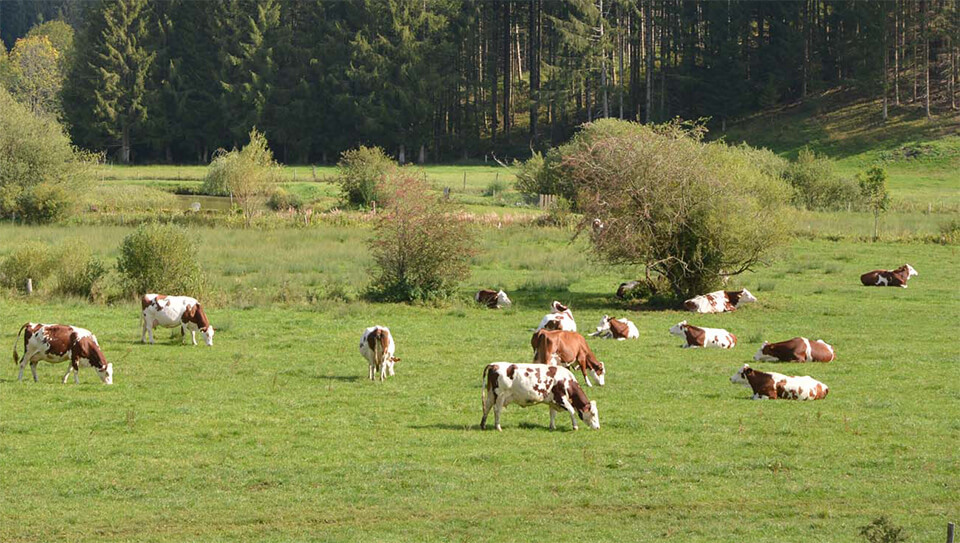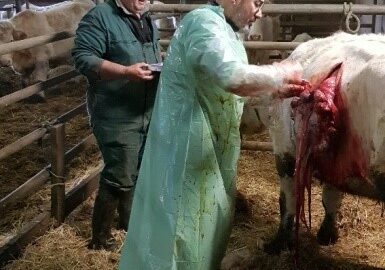Antibioprophylaxie en chirurgie bovine : recommandations actuelles

Auteurs
Résumé
L’antibioprophylaxie chirurgicale peut être défi nie comme l’administration d’antibiotiques avant ou pendant un acte chirurgical en l’absence d’infection préalable. Elle est à distinguer d’un traitement (antibiothérapie) entrepris en réponse à une contamination bactérienne. L’antibioprophylaxie n’est pas un palliatif à des erreurs ou des fautes d’asepsie. Elle reste néanmoins un des principaux moyens de minimiser la survenue d’infections post-chirurgicales. L’augmentation de l’antibiorésistance est une des raisons pour lesquelles les vétérinaires doivent adapter leur façon d’utiliser les antibiotiques, en particulier pendant les chirurgies. Chez les bovins, les études spécifi ques sur l’utilisation des antibiotiques (molécule, voie, durée) lors de chirurgie font défaut. Les recommandations proposées ici sont donc en grande partie issues d’une extrapolation d’études menées en médecine humaine ou dans d’autres espèces animales et pourront être amenées à évoluer. Parce que l’aseptie en conditions de terrain est illusoire, une antibioprophylaxie systématique est recommandée. Les antibiotiques de première intention à utiliser sont la Pénicilline G (procaïne), l’association Pénicilline G (procaïne) / Dihydrostreptomycine et l’Oxytétracycline. Afi n d’obtenir des concentrations en antibiotiques maximales au moment de la chirurgie, l’administration de l’antibiotique doit être réalisée avant la chirurgie, idéalement 1 heure avant par voie intramusculaire ou quelques minutes avant pour la voie intraveineuse. La durée recommandée de l’antibioprophylaxie varie de 3 à 5 jours et dépend principalement du type de chirurgie réalisée (propre, propre-contaminée, contaminée, sale).
Abstract
Surgical antibiotic prophylaxis can be defined as the administration of antibiotics before or during surgery in the absence of prior infection which is different from treatment (antibiotherapy) undertaken in response to bacterial contamination. Antibiotic prophylaxis is not a preventive measure to combat errors or mistakes in asepsis. It remains one of the main ways to minimize the occurrence of post-surgical infections. Increasing antimicrobial resistance is one of the reasons veterinarians need to adapt the way they use antibiotics, especially during surgery. In cattle, specific studies on the use of antibiotics (molecule, route, treatment duration) during surgery are lacking. The recommendations are therefore largely derived from an extrapolation of studies conducted in human medicine or other animal species and may have to evolve. Because it is impossible to achieve aseptic conditions in the field, systematic antibiotic prophylaxis is recommended. The first-line antibiotics to be used are Penicillin G (procaine), the combination Penicillin G (procaine)/Dihydrostreptomycin and Oxytetracycline. In order to obtain maximum antibiotic concentrations at the time of surgery, antibiotic administration must be performed intramuscularly 1 hour or intravenously a few minutes before surgery. The recommended duration of antibiotic prophylaxis varies from 3 to 5 days and depends mainly on the type of surgery performed (clean, clean-contaminated, contaminated or dirty).
D'autres articles
Découvrez aussi nos formations
05 janvier 2026
5 jours
Bovin laitier · Bovin viande · Bovins

